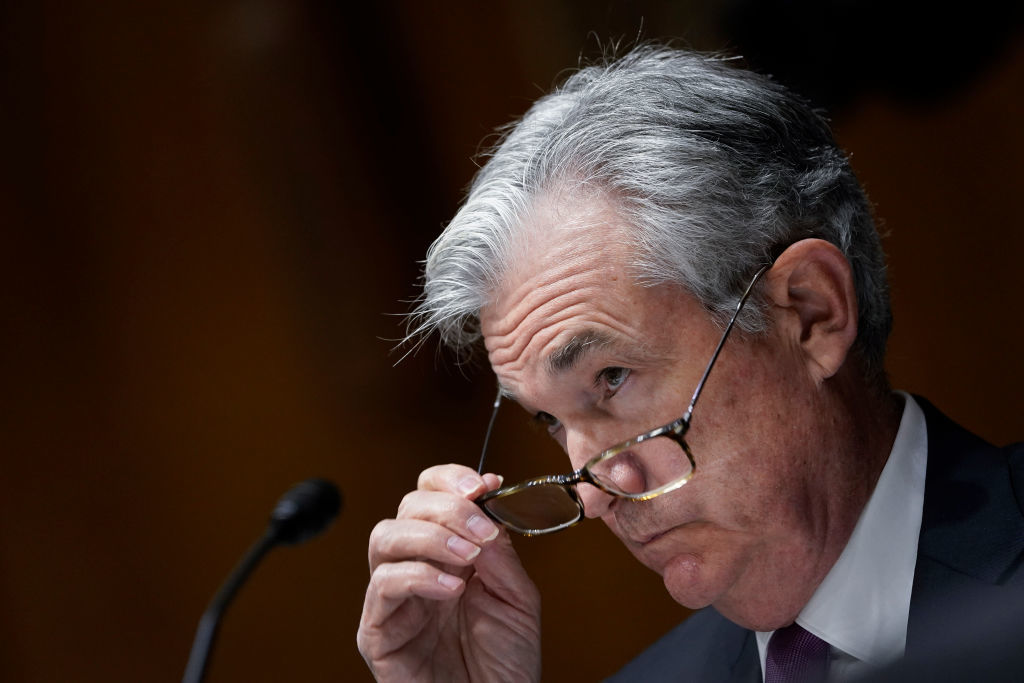US markets closed lower yesterday after the Federal Reserve threw the market a bit of a curve ball, as the timeline for a possible rise in interest rates was brought forward, with the consensus for a possible two hikes by the end of 2023 much sooner than the previous estimate of 2024, although the underlying tone remained cautious.
The Fed also unexpectedly nudged higher the interest rate on excess reserves (IOER) by 5 basis points to 0.15%, in a sign that perhaps there was a degree of concern about rising inflation expectations. The central bank also upgraded its growth forecasts to 7% for this year, along with its core inflation forecast to 3%, a sharp adjustment up from the previous 2.2%.
This unexpectedly hawkish tilt saw yields on US government bonds rise sharply, while US stocks rolled over, slipping to the downside, though the eventual losses were fairly well contained. If the markets really were spooked by last night’s slight change in stance, then you would have expected a slightly bigger reaction stock market wise. The bond market reaction was a little sharper, with 10-year yields pushing back towards the 1.6% level, putting them back where they were at the beginning of last week, while the 2-year yields shot up to a post-pandemic high above 0.20%.
This reaction may serve as a useful reminder that while central banks may seem fairly relaxed about the inflation outlook, they still have to look a lot further out, and realistically if the economy improves as expected, monetary policy will have to change. The fact that the Federal Reserve are slowly preparing the ground now may well be unsettling for markets, but it is also necessary and in the here and now, monetary policy still hasn’t changed that much.
The bond buying programme still stands at $120bn a month, and while they have started to talk about a timeline for reducing it, they are still some way short of acting in that regard. Chair Jerome Powell was keen to insist that the Fed was still being cautious and that economic uncertainty remains high. The insistence was still there that the Fed sees inflationary pressure as being transitory in nature, though last night’s changes suggest they may be starting to hedge their bets a little, over concerns that “inflation could turn out to be more persistent than we anticipate”.
The US dollar also took a trip higher, breaking out to the upside and pushing the pound below the 1.4000 area, and the euro back down towards 1.2000. The reaction of the pound is slightly more surprising given yesterday’s stronger than expected CPI inflation numbers, which suggest the Bank of England might have to be slightly more hawkish as well when it meets next week. Gold prices also slid sharply in response to the rise in yields and the stronger US dollar.
Once the dust has settled this slight shift in policy expectations hasn’t really changed that much. The economic recovery still looks solid, albeit subject to setbacks with new variants and the data is likely to continue to remain choppy. Today’s European market open isn’t likely to be significantly adversely affected by last night’s events, though we could see some choppiness as asset allocations readjust, however the underlying picture from an economic standpoint hasn’t really changed.
This afternoon’s US weekly jobless claims are still expected to come in lower, from last week's 370,000, with an expectation of 360,000. The Swiss National Bank is expected to keep its monetary policy unchanged, while in the EU the final CPI number for May is expected to be confirmed at 2%.
EUR/USD – broke below the 50-day MA for now, heading towards the 200-day MA at 1.1980. This becomes the next support, with a break targeting the 1.1850 area. Resistance now comes in at the 1.2070 level.
GBP/USD – slid below the 1.4000 area and could spill over towards 1.3970, however the bias is still positive, but only just. If we fall through the 1.3870 level beckons. Resistance still at 1.4200 with a move through the 1.4240 area targeting the 2018 peaks at 1.4375.
EUR/GBP – still looks soft with resistance at the 0.8640 area which keeps the bias towards the downside, and a test of the 0.8560 area. A break below 0.8550 opens up the recent lows at 0.8480.
USD/JPY – bias remains for a move higher towards the 111.00 area while above the 109.80 area. A move below trend line support now at 109.80 opens a move back towards the 108.60 area on a break below 109.20.
Disclaimer: CMC Markets Singapore may provide or make available research analysis or reports prepared or issued by entities within the CMC Markets group of companies, located and regulated under the laws in a foreign jurisdictions, in accordance with regulation 32C of the Financial Advisers Regulations. Where such information is issued or promulgated to a person who is not an accredited investor, expert investor or institutional investor, CMC Markets Singapore accepts legal responsibility for the contents of the analysis or report, to the extent required by law. Recipients of such information who are resident in Singapore may contact CMC Markets Singapore on 1800 559 6000 for any matters arising from or in connection with the information.








